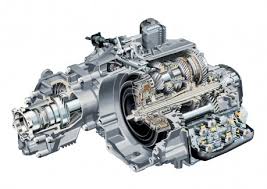Mobile:+86-311-808-126-83
Email:info@ydcastings.com
radial blade impeller
Understanding Radial Blade Impellers Design and Applications
Radial blade impellers are a critical component in various engineering applications, especially in the fields of fluid dynamics and mechanical engineering. These devices are primarily used in pumps and compressors to facilitate the efficient movement of fluids. Their design allows for effective energy transfer from the impeller to the fluid, making them an essential element in many industrial processes.
At its core, a radial blade impeller consists of blades positioned around a central hub. The blades are designed to generate centrifugal forces as they rotate, pushing fluid radially outward from the center. This motion is crucial in applications that require the transportation of liquids or gases under pressure, such as in water treatment facilities, chemical processing plants, and HVAC systems. The efficiency of a radial blade impeller can significantly impact the overall performance of these systems, enhancing flow rates while minimizing energy consumption.
One of the key advantages of radial blade impellers is their ability to handle large volumes of fluid while maintaining a relatively compact size. The centrifugal force generated by the rotating blades allows for high discharge pressures, which is particularly useful in applications that require the movement of fluid against substantial resistance. The design of the blades can also be optimized based on the specific requirements of the application, including variations in blade angle, thickness, and surface texture. This adaptability creates opportunities for engineers to tailor impellers to meet precise operational needs.
radial blade impeller

Furthermore, the material selection for radial blade impellers is critical to their performance and longevity. Common materials include stainless steel, bronze, and various polymers, each chosen based on factors such as corrosion resistance, strength, and weight considerations. For instance, stainless steel impellers are often preferred in applications involving corrosive fluids, while lightweight polymers may be suitable for less demanding environments.
In terms of applications, radial blade impellers are found in various sectors. In water treatment facilities, they play a vital role in the aeration processes, helping to mix air with water efficiently. In HVAC systems, these impellers contribute to the movement of air through ducts, ensuring that environmental control systems operate effectively. Additionally, in the chemical industry, radial blade impellers are employed in reactors and mixers, where they facilitate the uniform distribution of reactants.
The performance of radial blade impellers can be influenced by several factors, including flow characteristics, rotational speeds, and system design. Computational Fluid Dynamics (CFD) simulations are often employed during the design phase to optimize blade shapes and angles for enhanced performance. These simulations allow engineers to predict how changes in design will affect flow patterns and pressure distribution, ensuring that the final product meets all operational requirements.
In conclusion, radial blade impellers are integral components within many fluid systems, delivering efficiency and reliability. Their unique design and versatility make them suitable for diverse applications across various industries. As technology advances, the refinement of radial blade impeller designs will continue to enhance their performance, leading to even greater efficiencies in fluid movement and energy use in the future.
-
Why Is Choosing the Right Motor Housing Critical for Engine Performance?NewsJul.18,2025
-
Which Impeller Types Best Optimize Your Pump’s Efficiency?NewsJul.18,2025
-
Optimize Maintenance Efficiency with Durable Oil Catch SolutionsNewsJul.18,2025
-
Maximize Pump Performance with Precision-Engineered ComponentsNewsJul.18,2025
-
Elevate Industrial Flow Systems with Precision-Engineered ComponentsNewsJul.18,2025
-
Boost Durability and Functionality with Precision Power CastingsNewsJul.18,2025











